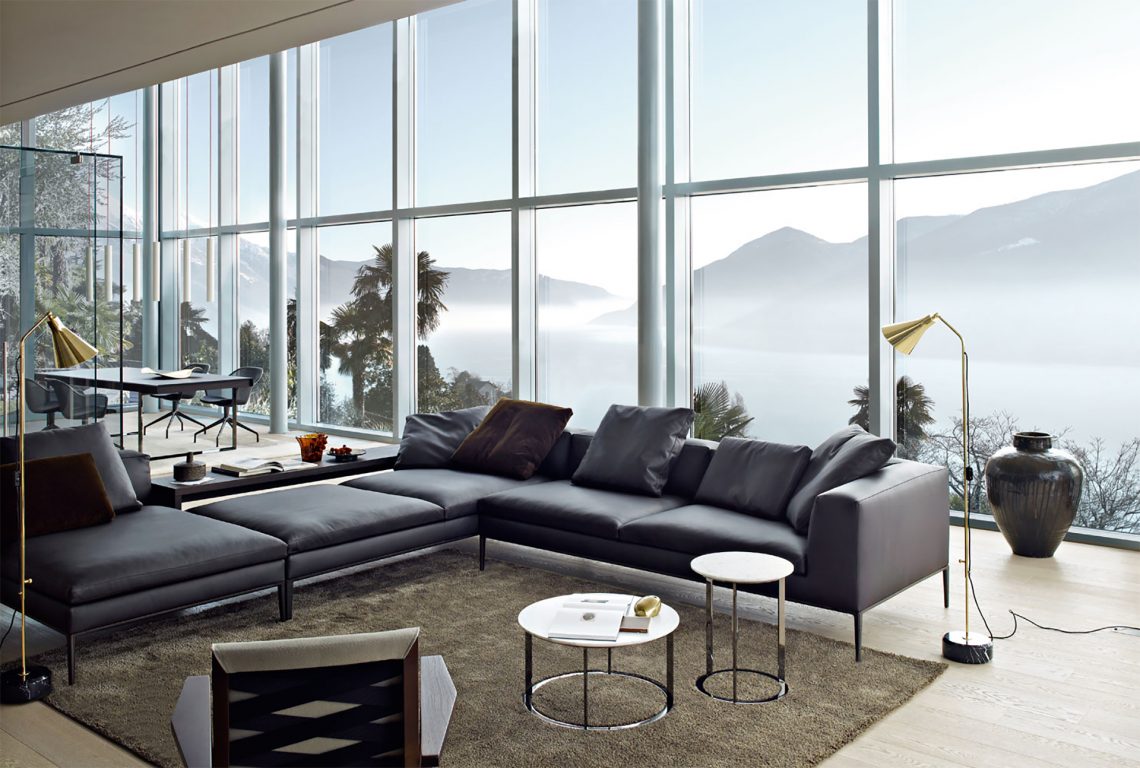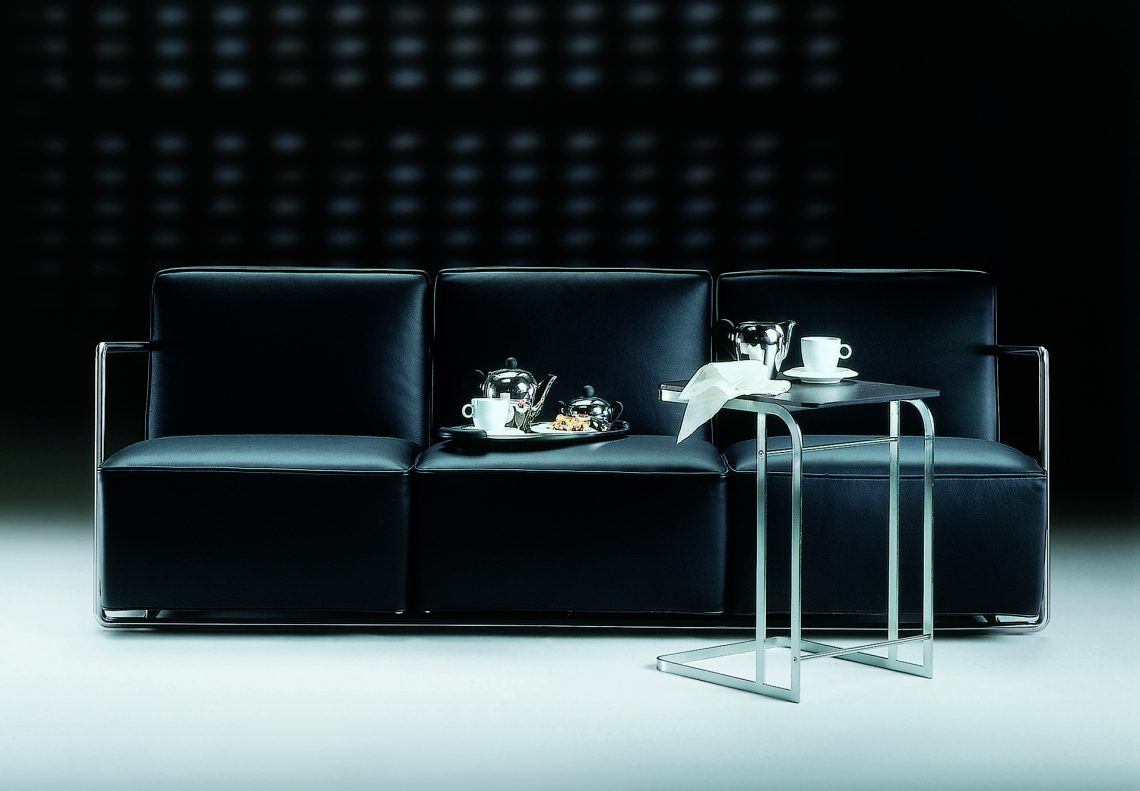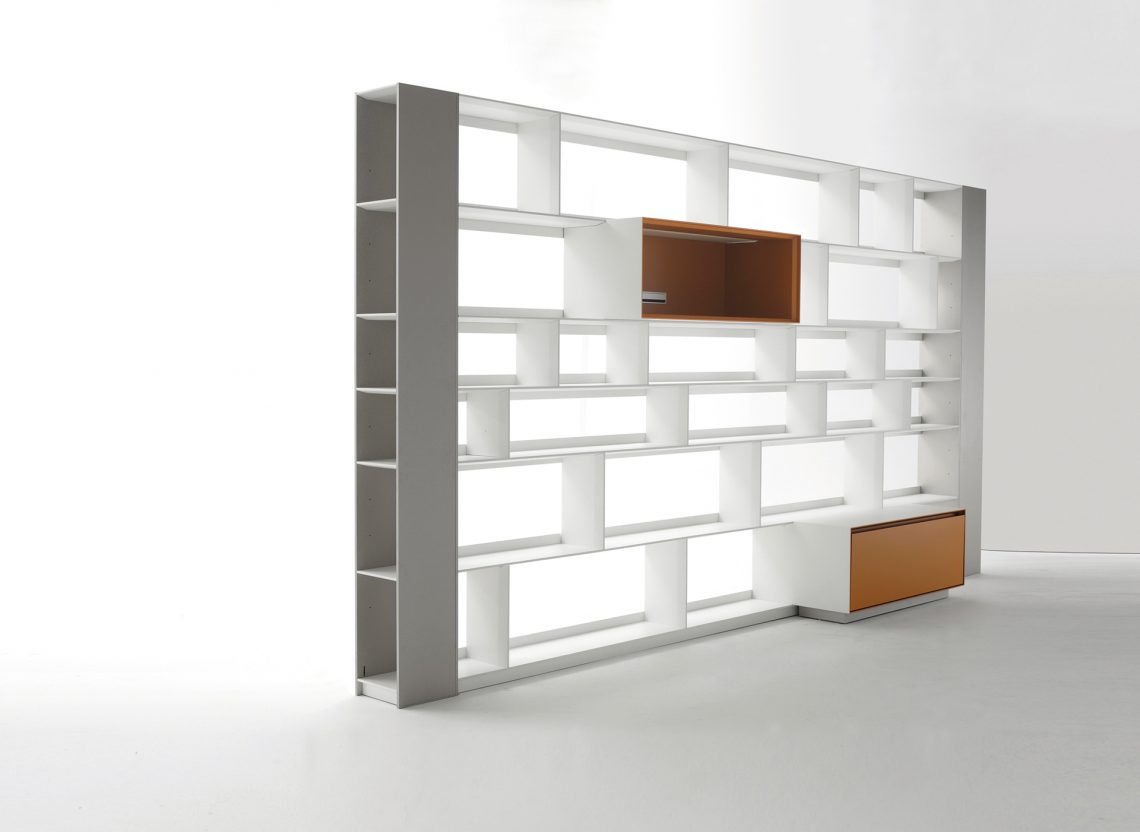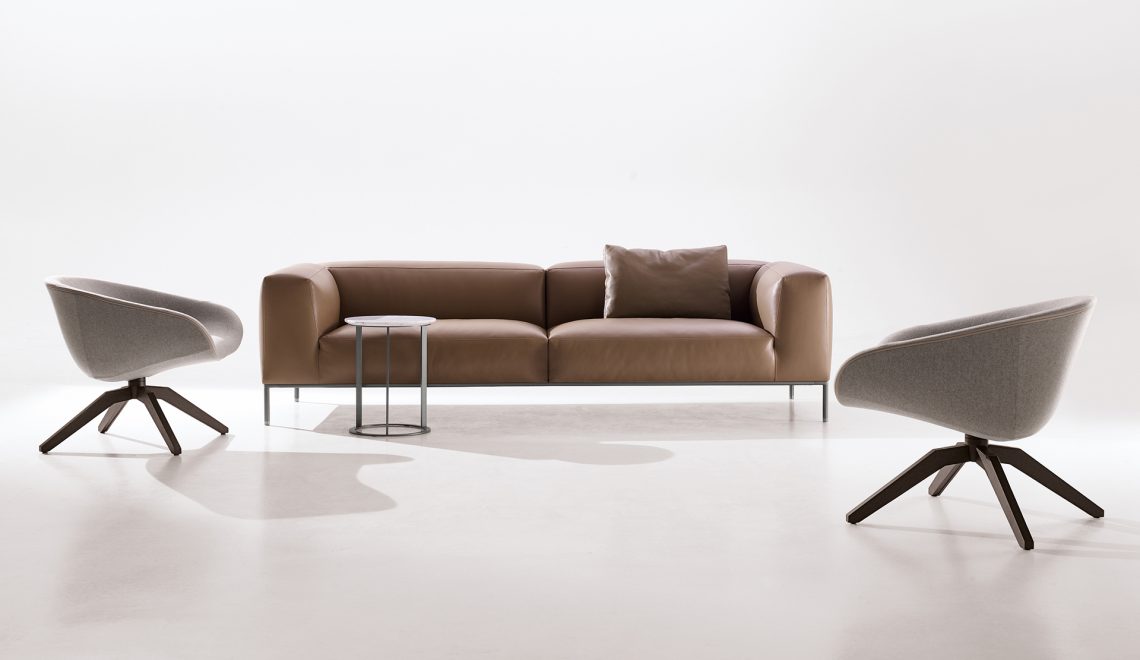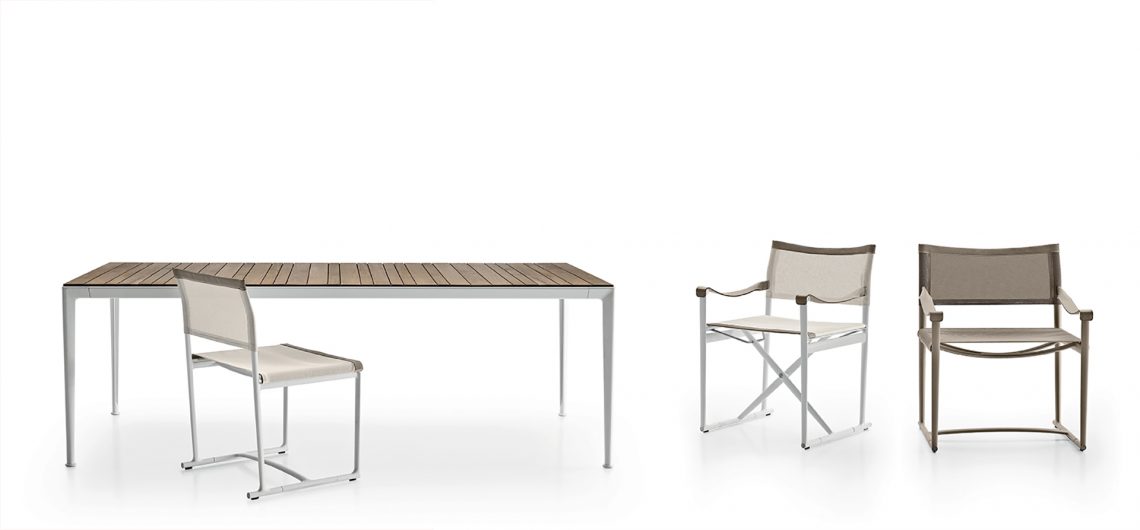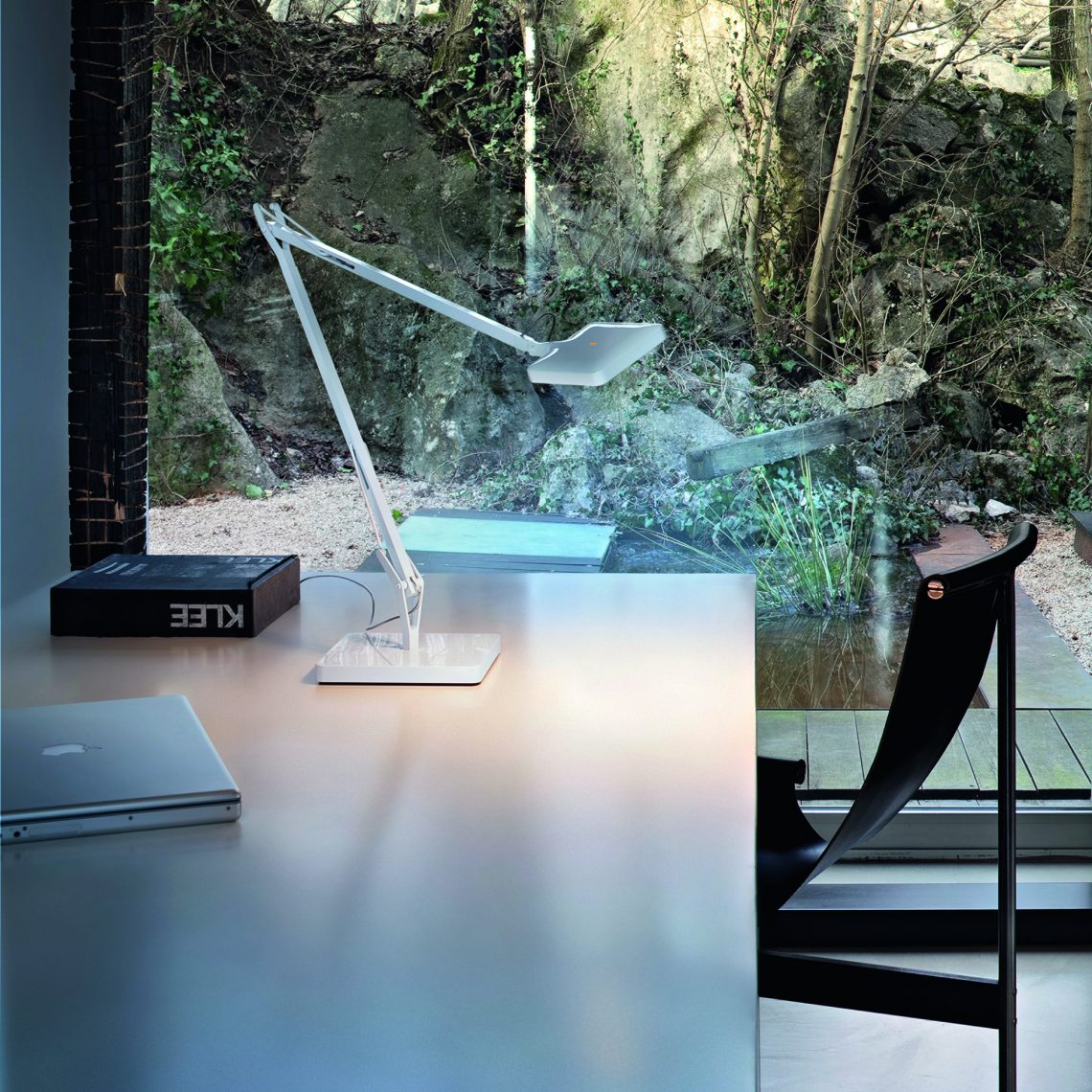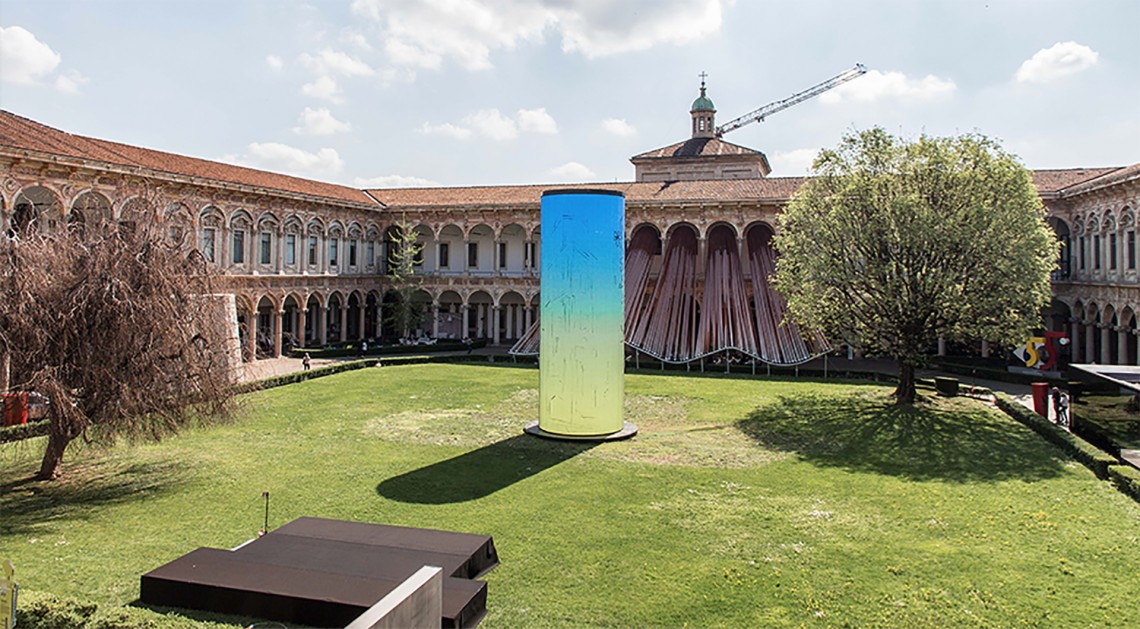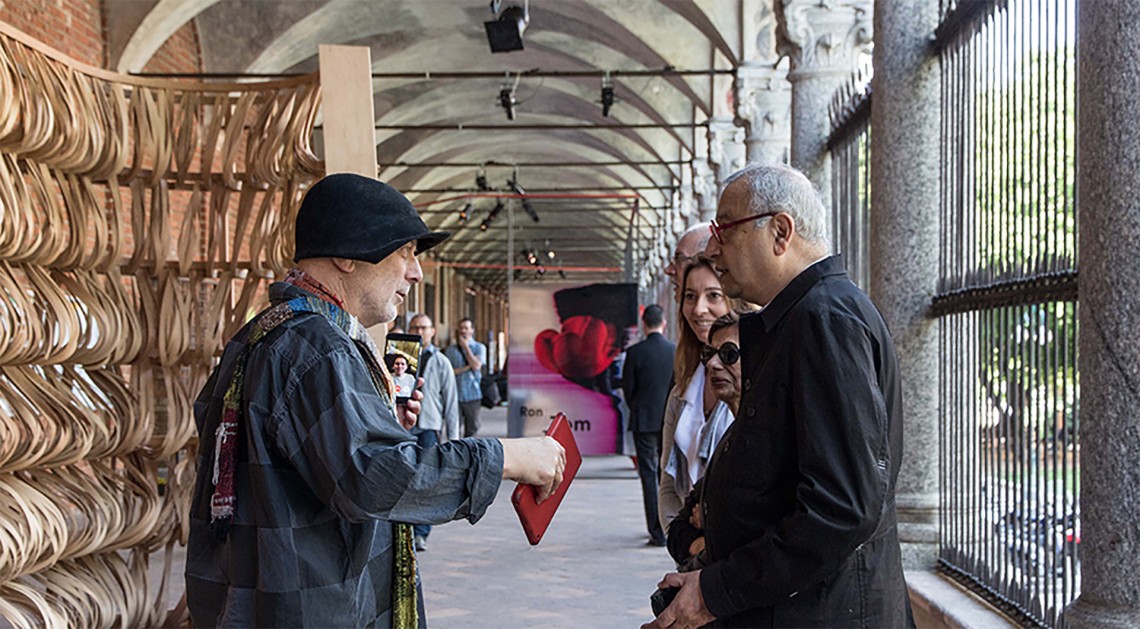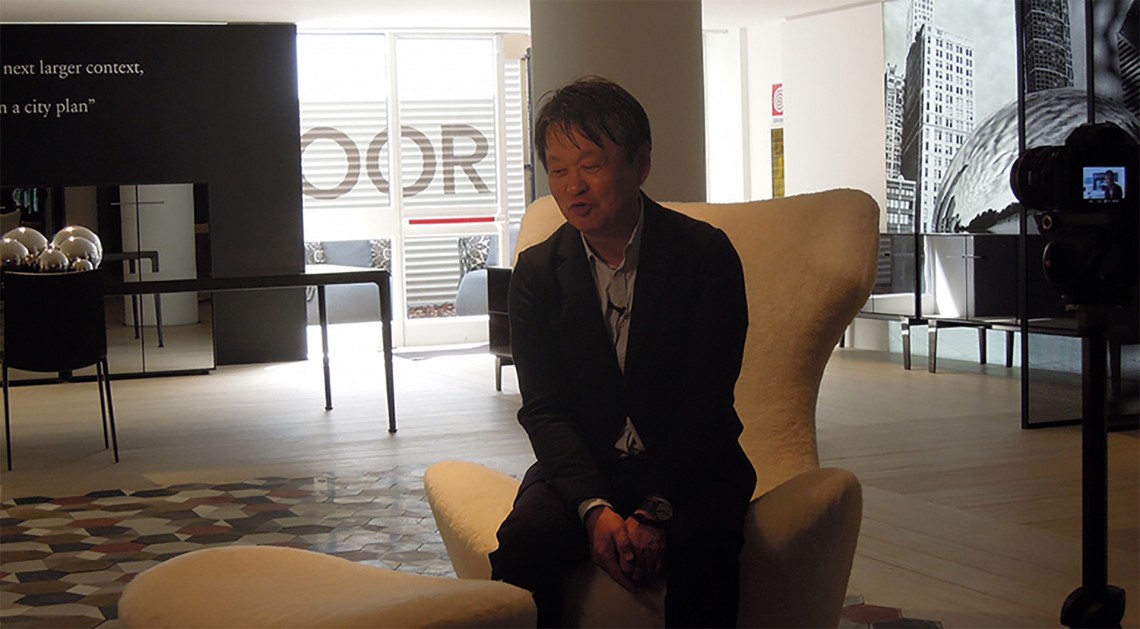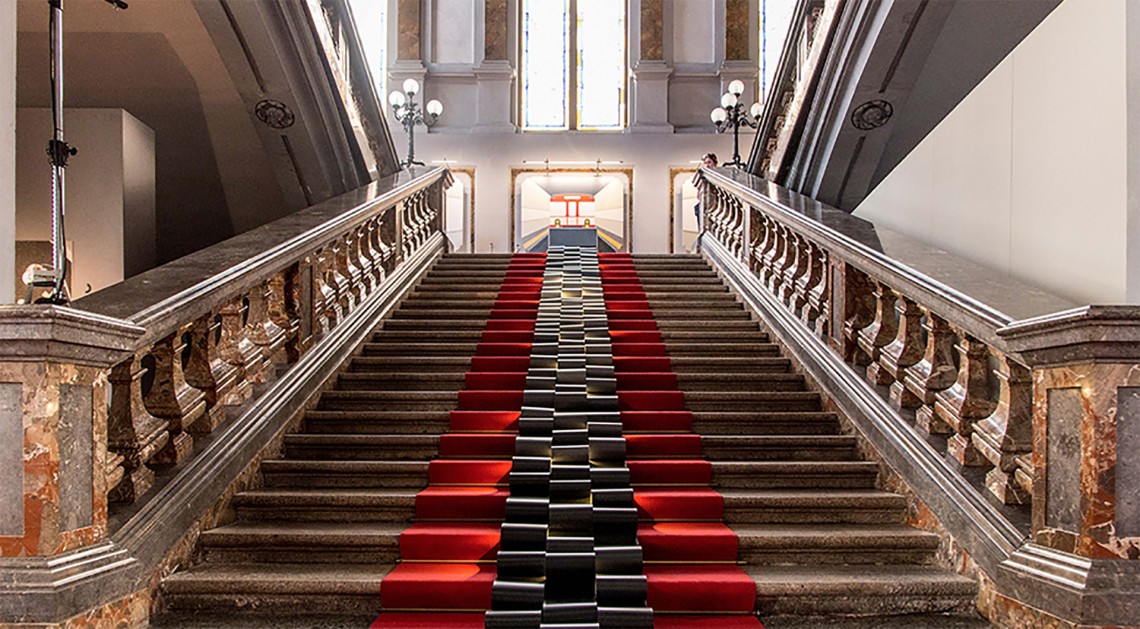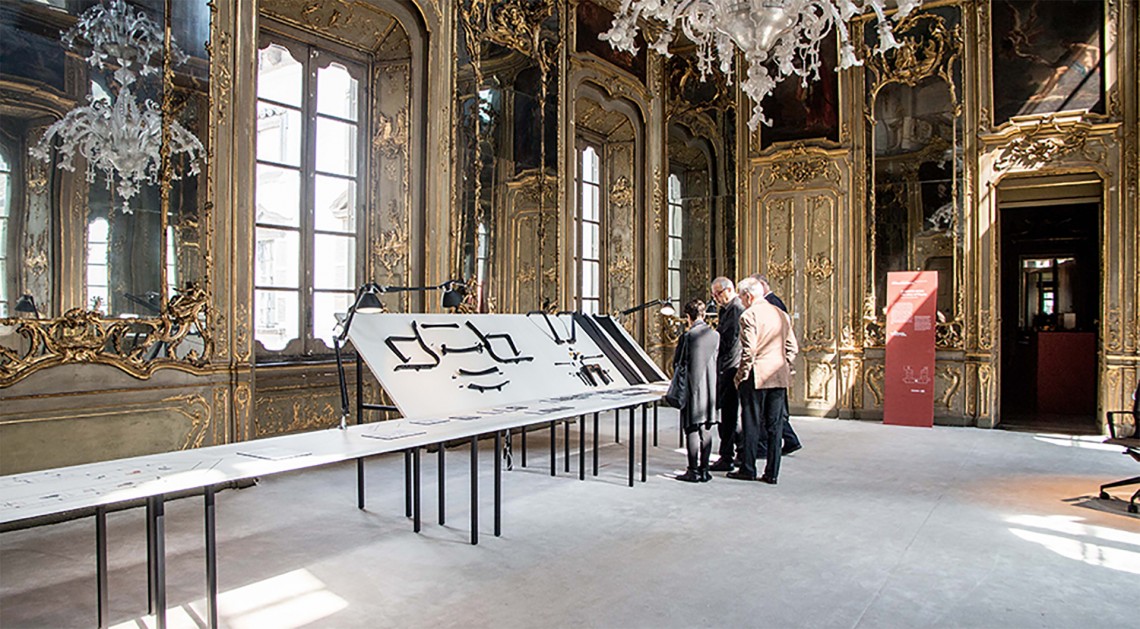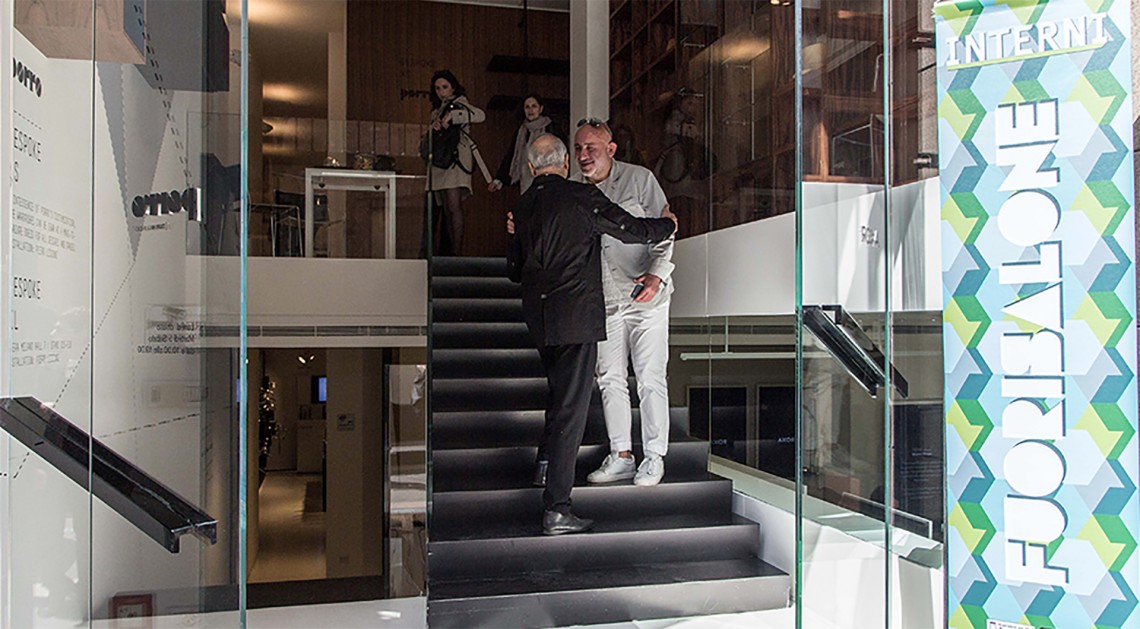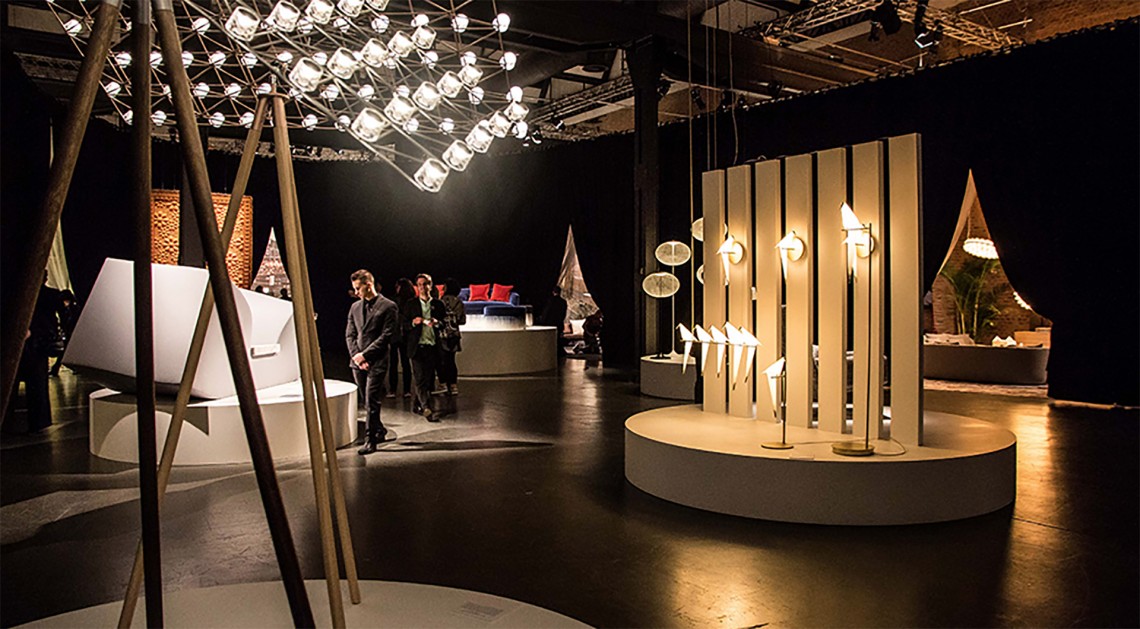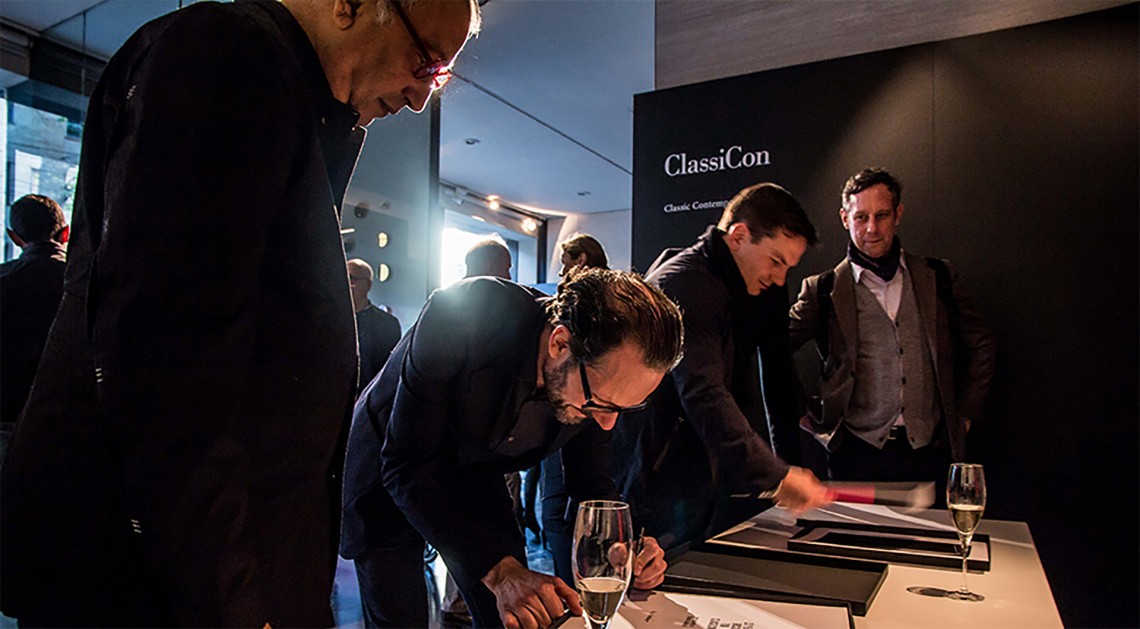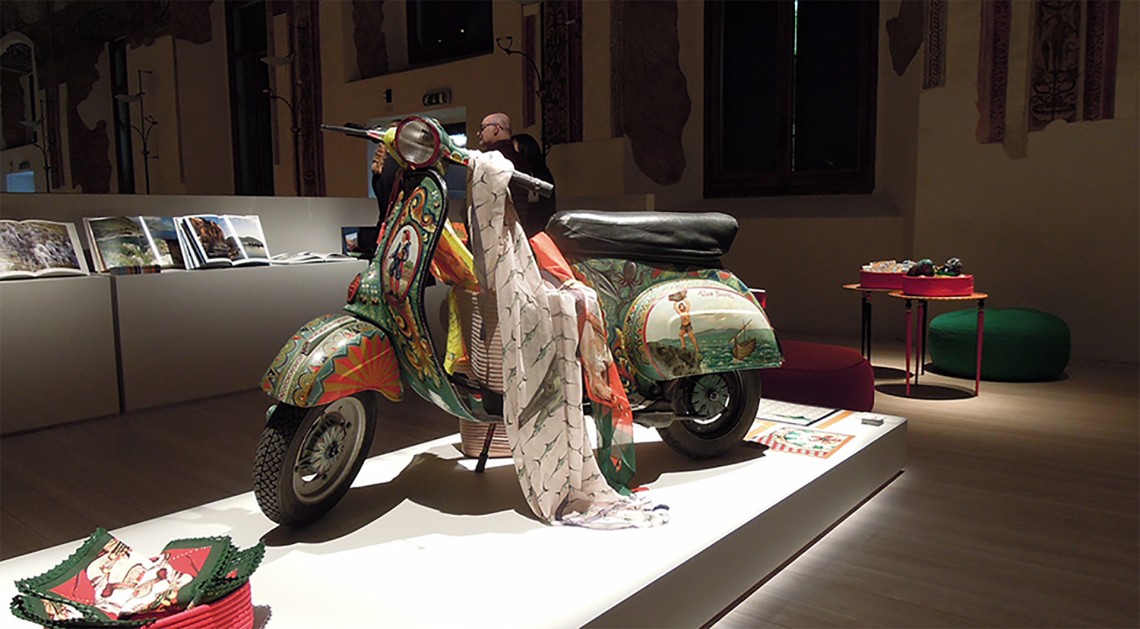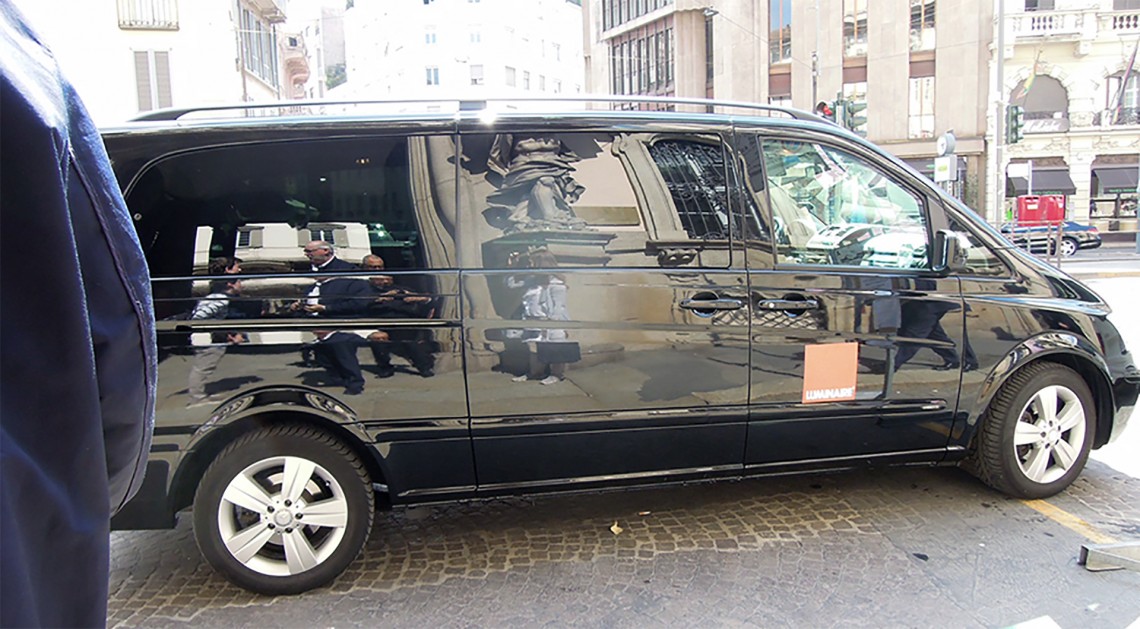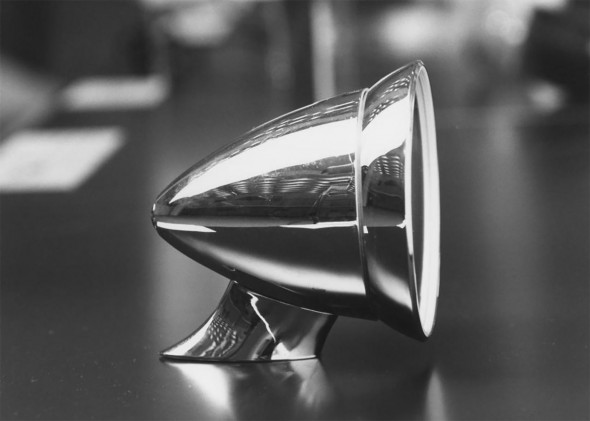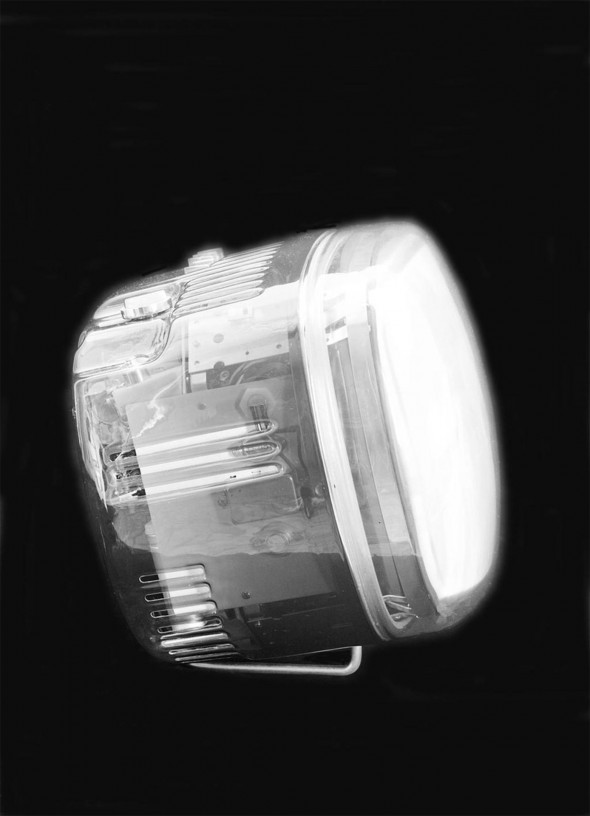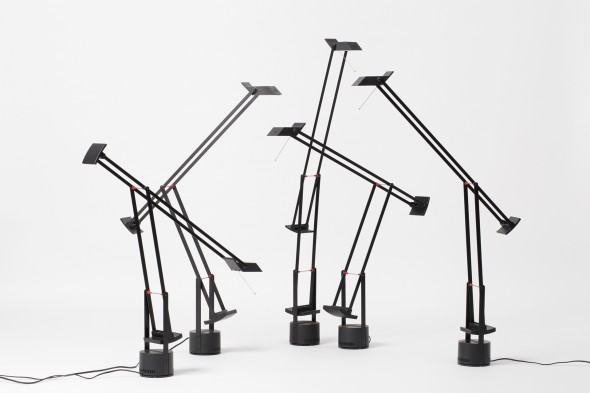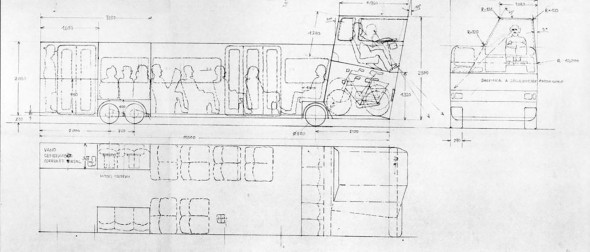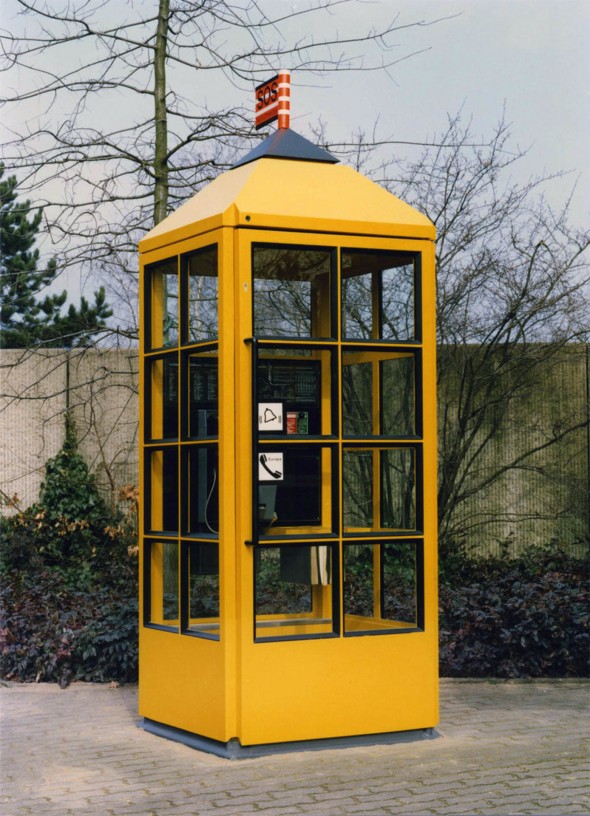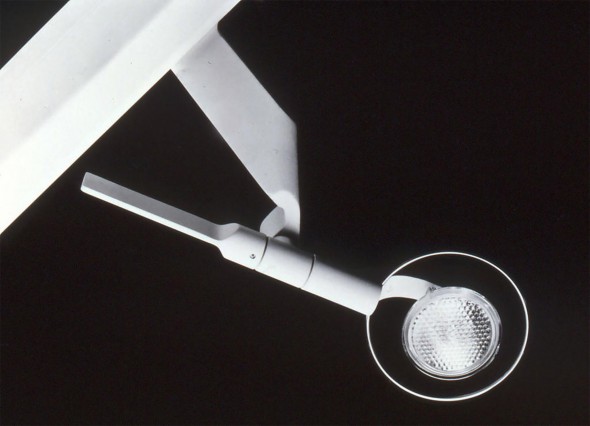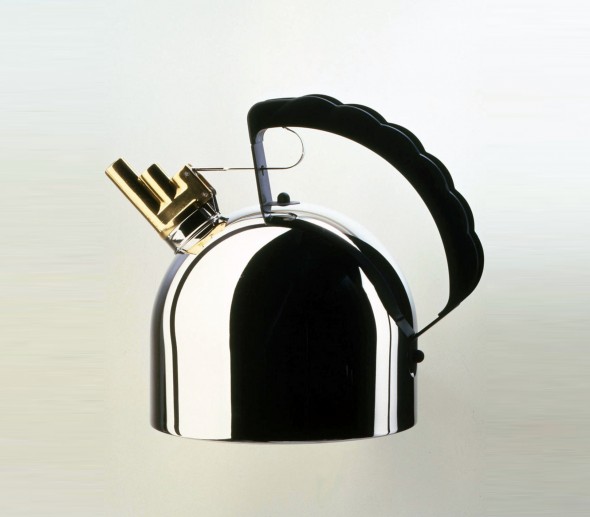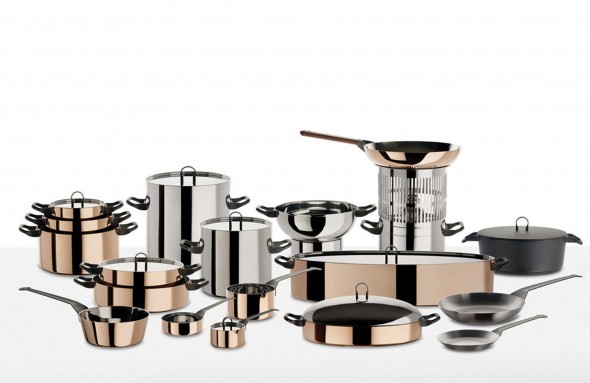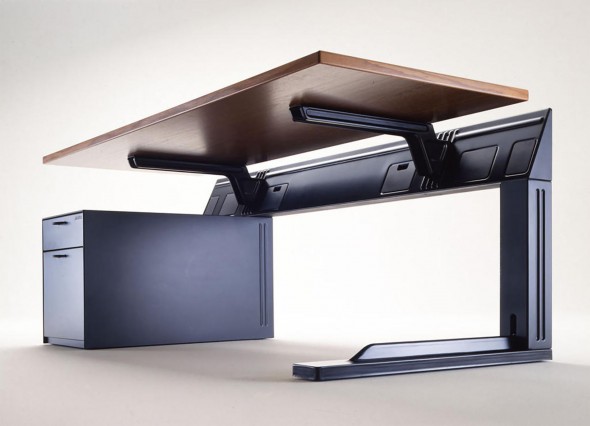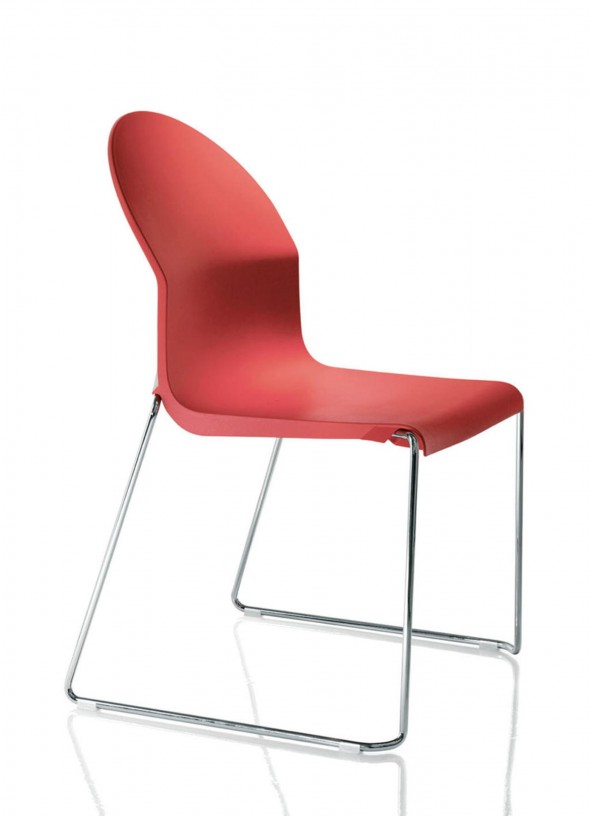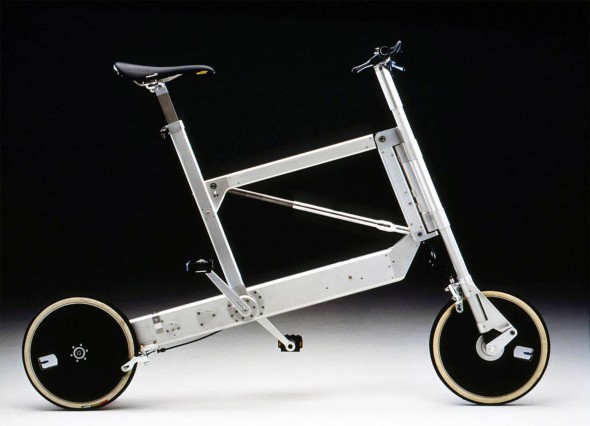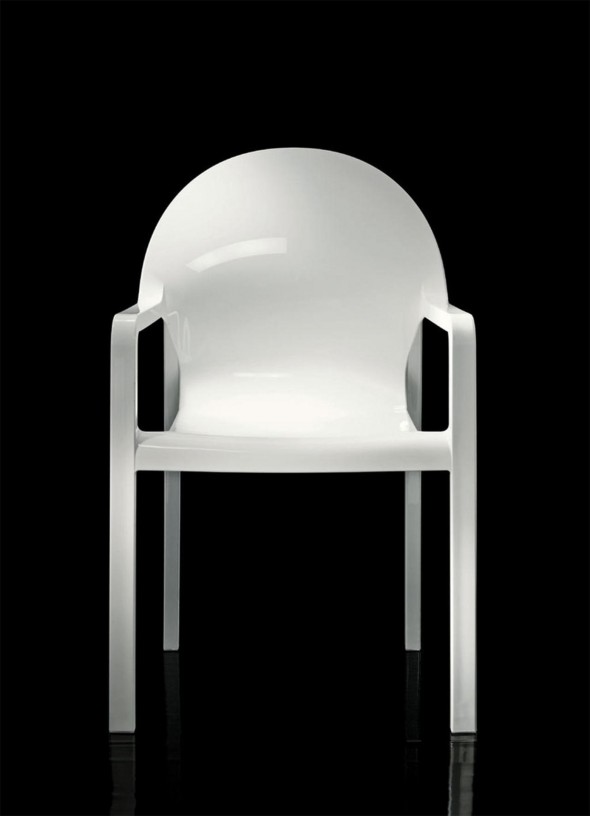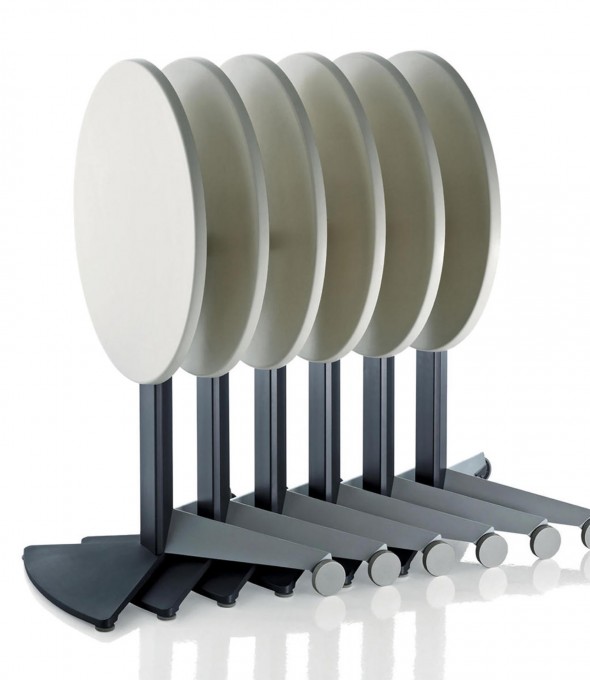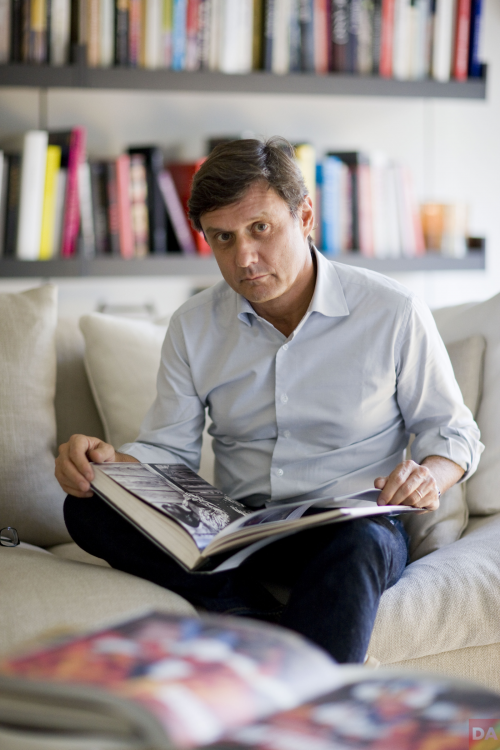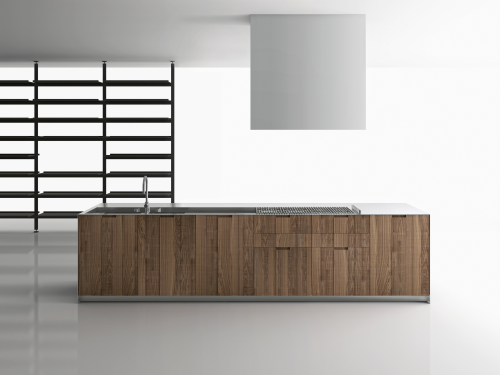
aprile kitchen with wood and stainless steel | piero lissoni | click > enlarge
[DA] The ‘Philippe” kitchen in Milan that was in your showroom, did that concept go into production?
[RG] Yes, it’s now in production. It took a few months to be ready because it required a new manufacturing patent: The new material looks like a solid piece of stainless steel, but in reality it’s a sandwich made up of very, very thin slices giving us a lighter material that’s easier to use and bend. Stainless steel can be very heavy and complicated to install. It was difficult and complicated to produce but we’re happy with the end result.
[DA] Let’s talk about the business side. You came to Boffi in 1989. Piero Lissoni came in 1990. Why were you guys brought in and what roles did you play? What roles do you play now?
[RG] Piero Lissoni at that time was already an extremely strategic resource for this company. When I came in 1989, I was completely ignorant in terms of design and manufacturing kitchens. My previous job was in the computer industry in Italy and France. No culture, no knowledge, no real special attitude toward this business.
[DA] Why did they ask you to come on board?
[RG] In reality, they didn’t ask me. I wanted to stop working for large internationals and wanted to become an entrepreneur and so, I started looking for a company that was for sale or that needed a partner to step in and become an industrial entrepreneur. My family has been and still is entrepreneurial in Milan and I inherited this mindset. In my search I found Paolo Boffi and he was looking for a partner in 1989. We quickly understood one another’s desires and wishes. In the end, we made this deal that was an incredibly lucky deal for me. I hope for him also. I think we were very complimentary, especially in the beginning. He was the real creative mind and on my side, I brought a little bit of money and management.
[DA] Were you replacing something or were they trying something new?
[RG] Boffi was a traditional family business. The second generation had three brothers. They had problems and ended up separating. One brother bought from the others. Paolo now owned all the company but wasn’t an experienced manager. He needed someone to help him and needing some more money because he had used all of his to buy the company from his brothers. That was the main reason why he wanted a partner. Paolo proved to be exactly that, a partner. It’s not easy to find an entrepreneur that owns 100% of a family company, and is open to share it with someone else. We really had a very nice time and a lot of fun. Piero Lissoni was also a part of the partnership.
[DA] Are the three of you still doing the same things?
[RG] Yes. At the beginning, we were much younger. Piero was starting his activity as an Art Director. Piero has a unique capacity of fully understanding a company and defining a strategy and pointing you the right direction. He’s always thinking in terms of the whole company and not simply particular products. We’re not fighting one product against another anymore. We’re fighting the concept of one company voice against other company voices. Boffi’s story is about how we produce our products, conceive the collection, the marketing we use, how we distribute in our showrooms. It’s a meaningful and complex integrated message that makes sense, is successful and is liked by our customers.
[DA] I’m thinking about Steve Jobs hiring Paul Rand, the designer of the IBM corporate image. Jobs had just left Apple and was starting a new company, Next. Jobs tells Rand that he believes it takes 10 years and $100,000,000 to evolve an identity into a personality.
[RG] It’s really a long process and these companies are so complicated and sometimes rigid. A kitchen company like ours is one that is far more complicated that any other design industry. We sell products as a system to a high-end sophisticated customer who desires something tailored to their needs. We deliver an impeccable kitchen that will stand in the home for 20-25 years. You’ll have a kitchen in front of you for so long that you can get bored if it’s not exactly what you want.
It’s a business that is relatively rigid for being a retail activity. It’s not an impulse purchase. With a kitchen, it’s a long process that can last months.
[DA] It seems a very tough retail sell. Maybe harder than selling airplanes to corporations. This may not come off well in print but with the kitchen there’ a wife to incorporate into the recipe.
[RG] We see people that enjoy the process of purchasing a kitchen that they may stretch the process longer than needed. The men come back many times with their wives, it’s a joint effort for sure. It’s interesting, the more expensive and complicated, the more the husband gets into it. The men become intrigued by the technicalities.
[DA] We’re evaluating our own kitchen now. We pull our friends, or they pull us into the discussions. The kitchen is 16 years old and not engineered well enough.
[RG] You want to have access to a good product and a professional who can evaluate your needs and explain how and why the product is built the way it is. Satisfaction is extremely important. We devote a tremendous amount of money in our budget to train our people very well. We have a very nice training department in Milan near where the factory is located. It’s 1, 500 square meters where we have all sorts of products.
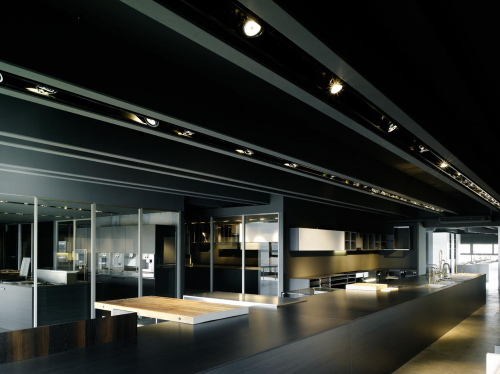
customer training facility
[DA] Are you talking about the Customer Training Facility?
[RG] We train our dealers to be perfectly prepared to face any kind of customer. For example, in Paris, we have a shop there. A woman walks in and asks for our most basic sink. In Paris at this shop, we are selling very elaborate kitchens. Our dealer answers her questions very nicely for one hour. She goes away and comes back one month later with an elaborate kitchen request. We discover this woman is the wife of a very important industrial owner in France. The lady went to every high-end kitchen shop in Paris and asked for a sink from everyone. She then chose the one that answered the questions best for the longest time and said that if the dealer is paying that much attention to her for a sink, she was sure they would deliver a very nice kitchen with perfect customer service.
[DA] We have Boffi in our bathroom, the process was enjoyable and we are far from bored.
[RG] Good to hear, thank you.
[DA] Do you also bring customers in?
[RG] Yes. We like to bring them to the factory. We are very open and like to show the quality of our products. You can feel it when you visit a factory, go around and see how things are done. We encourage our dealers to bring any kind of customer. It’s satisfying to say those who visit our factory, who get involved with the process, pretty much are sold on us.
[DA] Is there a role for design to play in a challenging economy?
[RG] Certainly. Design is a software that adds tremendous obvious and not-so-obvious features to products. Design becomes part of the conversation with some products. When you talk of Apple you invariably talk about design. The design attributes can make an environmental as well as a economic statement. We all notice how more and more cities are having design fairs. No matter the economy. There must be a reason. And there’s growth and awareness now seen in many industries where only fashion and architecture held court.
[DA] How do people find Boffi? Do you feel that Boffi is well represented worldwide?
[RG] We’re in around 55 countries and export 75% of our production so we feel we’re well represented worldwide. And it’s competitive so we are always working to be better. We scrutinize where we go, what’s the best fit for us to open a showroom and assemble a Boffi team. We are working on growing in Asia now.
[DA] Design is making sense of things. Does Boffi frame concepts and products in innovative settings to capture users’ imaginations?
[RG] Most good brands try to sell emotions today. It’s not so easy to do with products like kitchens that also need to be technologically reliable. You cannot exaggerate the design approach forgetting about the rules of the kitchen. Boffi believes the presentation, the passion, the experience of the people presenting is important to adding emotion to the equation. It’s one of the ways to be different from the others. And today’s market is extremely fast. If you have a strong product in your collection, you can quickly find a strong resemblance with the competitors.
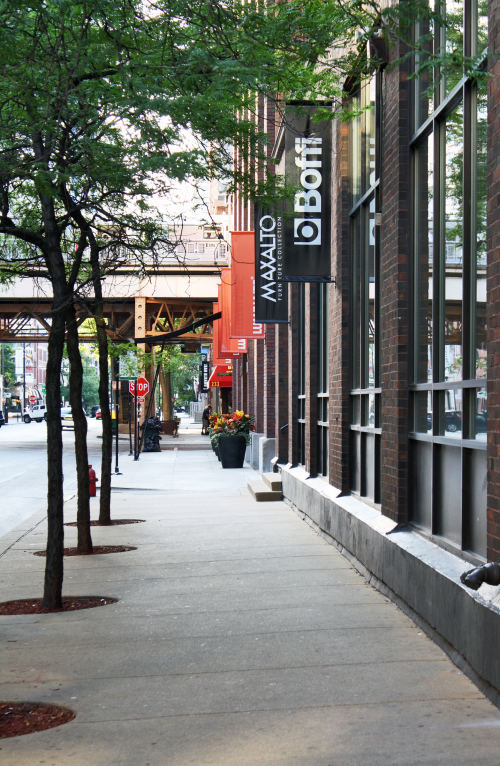
chicago showroom
[DA] I’ve been to three of your showrooms. This new Chicago store is a bit different than the others, not as much of space. Is the move an experiment in terms of market mix?
[RG] Yes. Here we are using a different formula. In general in larger cities, we have completely monobrand shops were you just sell Boffi, where we try to communicate our professional strength. In this one, it’s a very beautiful space. We share it with B&B Italia and the Maxalto line. It’s a collaboration between 2 brands at the same level that share the same values. They are complimentary products in terms of style. I’m also very good friends with the B&B owners so there’s always a special feeling. This formula can be both efficient and effective, especially when you have showrooms that are a little too big. By sharing it with another company in line with yours it can also have a very interesting co-marketing aspect that has appeal to customers.
[DA] This is a great space. In terms of the product offerings in this showroom, the amount of product on the floor is less than your other showrooms.
[RG] It’s not necessary to show a lot of products. It’s important to show products that reference what you can offer. I feel you can always bring your customer to a bigger show in New York or Italy when they want to buy a kitchen and where they can spend some time. Also, it’s a nice experience for them. We see many of our customers who enjoy visiting our other showrooms in other cities. If you’re able to maintain the same quality of offerings at diverse locations your story is much more compelling.
[DA] Kitchens are not found and sold via your Web site are they?
[RG] You can use the Web site as a brochure to look at this or that. But we really want people to come to our showrooms and be able to touch the product, talk with our people and receive a really tailor-made solution.
[DA] What does sustainability mean to you right now?
[RG] It’s a growing need that we see in everywhere. We see that the public is very interested in it. That’s why we not only want to be in line with the needs of the market, but we feel it is a very important part of our social responsibility. Our lacquer is formulated to be pollution-free. We try to recycle all of our unused materials.
[DA] You have 39 designers. What’s asked of your designers? Do they contribute toward innovation of technology or product meaning?
[RG] Designers are chosen depending on their capacity to deliver something special to Boffi. And their styles are complementary offering up the option of experiencing one complete collection or mixing pieces to make a custom product. Today, we have a core of 5-6 designers. The process of choosing designers is made with Piero Lissoni. Together we choose the designers without really a specific requirement except for their style.
[DA] Is there anything we didn’t cover that you’d like to get into our conversation?
[RG] I would invite everyone that wants to discover Boffi to come our showrooms, to come to Milan. If they want to visit the factory and our showrooms, it’s always a pleasure to have them come. We like to really show what we are. There are no secrets. It’s always an open door for everyone.
1) aprile in wood and stainless steel | piero lissoni
1) aprile in stainless steel | piero lissoni
3) cila in glass | luigi mason
4) k20 in stainless steel | norbert wangen
5) b20 bathroom cabinets | norbert wangen / index mirror | felicia ferrone
6) quadtwo | jeffrey bernett / boccia lamp | piero lissoni
7a) CTline | victor vasilev
7b) CTline | victor vasilev
8) tape shower cubicle | monica armani
9) > 11) milan showroom
12) > 13) apartment installation
14) > 16) customer training facility
17) > 20) chicago showroom








